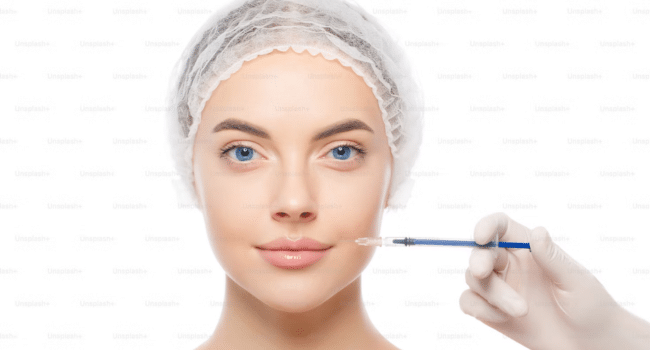Table of Contents
When the two sides of the face are equal in size, shape and location of features, we call this facial symmetry. On the contrary, an asymmetrical face has a noticeably distinct right side from its left – which can be attributed to genetics, trauma or advancing age. Luckily there are many ways to fix an asymmetrical face. One of the most popular options to even out facial features is face lift surgery.
What Causes Asymmetrical Face
From environmental influences to imbalances in facial growth, there are various elements that can cause an asymmetrical face. Although a minor amount of facial asymmetry is normal and barely distinguishable, more pronounced discrepancies may lead some individuals to feel insecure or embarrassed.
To better understand the causes behind an unevenly proportioned face, here’s a list of potential contributing factors:
Genetics
Genetic predisposition is one of the most common reasons for facial asymmetry. Many people are born with distinct differences in their facial muscles and bones, resulting in an unbalanced face shape. For example, unequal sizes or shapes of the jawbone or mandible can lead to an uneven appearance.
Injuries
Injuries to the face can disrupt facial symmetry, with trauma such as broken noses or cheekbones having drastic effects. This type of asymmetry may result from slips and falls, athletic injuries, car accidents and more — fractures, soft tissue tears, burns and nerve damage being some of the common culprits.
Dental Issues
A common dental complication that can affect the evenness of your face is misalignment of the teeth, causing one side to appear more prominent than the other. This issue also impacts jaw symmetry due to its effect on jaw positioning.
Ageing
With age, our faces may become asymmetrical due to a variety of factors. For instance, changes in bone structure can occur as bones tend to lose density and volume over time. A decrease in muscle tone leads to drooping or sagging on one side of the face which weakens the skin’s ability to bounce back from stretching or sagging. Additionally, ageing causes a loss of skin elasticity resulting in an uneven facial appearance.
Types of Asymmetrical Face
Did you know there are two types of facial asymmetry?
Developmental asymmetry is one variety, which could be caused by genetics or environmental causes. The other form, acquired facial asymmetry, comes about due to an injury or medical condition. It’s essential for diagnosing and treating this issue accurately that we comprehend the different kinds of facial imbalance.
Developmental Asymmetry
During the course of embryonic growth, childhood, or adolescence, developmental facial asymmetry can manifest itself in a number of ways. This could be due to genetic inheritance or environmental influences – perhaps both in tandem! A few common indicators are a nose that is not centred, uneven eyes or eyebrows and an uneven smile/jawline.
Acquired Asymmetry
Acquired facial asymmetry refers to differences in the structural alignment of one’s face which manifest over time. This kind of shift usually originates from an outside force, such as an injury or medical condition. Depending on the severity and nature of these factors, this type of facial irregularity can appear suddenly or gradually and affect any area of someone’s visage – swelling due to injuries, scarring caused by accidents/illnesses; stroke/paralysis; oral issues (TMJ disorder) like misaligned teeth; sleeping pattern irregularities are all potential causes for acquired facial asymmetry.
Non-surgical Treatments
If you are battling with facial asymmetry, there is a wide array of non-surgical treatments to help even out your face without taking the plunge into invasive procedures. Fortunately, here are some of those options that can assist in correcting an asymmetrical face:
Dermal filler is an excellent way to restore lost volume and accentuate natural curves of the face, allowing you to make your features look fuller and more balanced.
Meanwhile, anti-wrinkle injections can relax muscles that cause wrinkles on the face, diminishing their appearance so they won’t affect your facial symmetry. With these two treatments combined, you can achieve a younger-looking complexion with enhanced contours for a perfectly symmetrical result!
Dental treatments can help to restore facial harmony if you’re dealing with an asymmetrical bite. Orthodontic solutions such as braces and Invisalign are perfect for slowly realigning your teeth and jaw, transforming a crooked smile into one that’s even and symmetric. Not only will this make the mouth aesthetically pleasing but it’ll also improve overall face symmetry!
Unlock the power of makeup to achieve symmetrical perfection! With techniques like contouring and highlighting, you can easily balance an asymmetric face for a more uniform look. Don’t be afraid to experiment with cosmetics; it’s amazing how much difference just a few simple steps can make in creating symmetry.
Hairstyles can be used to beautifully complement an asymmetrical face. A side-swept fringe can help obscure any larger foreheads, while layers create volume and movement which helps balance out a crooked jawline. With the right combination of these two styles, you’ll have a look that is harmoniously beautiful!
Surgical Treatments
If you’re looking for a solution to your facial asymmetry, consider opting for asymmetric face surgery. There are numerous potential treatments available depending on the severity of your condition. Here we’ll outline some of the more common options out there.
- Facial fat transfer
- Rhinoplasty
- Facelift
- Blepharoplasty
- Neck lift
- Otoplasty
- Forehead lift
If you are considering a surgical procedure to address facial asymmetry, it is essential to be mindful of the possible outcomes and have realistic expectations. Results may vary depending on your individual situation.
Next Step
If you’re inclined to consider facial asymmetry surgery in order to bring balance and symmetry back into your face, it is essential that you speak with a trustworthy plastic surgeon first. This specialist can assess your unique situation and decide on the most suitable strategy for achieving the best outcome possible. Your expectations as well as any associated risks or recovery periods should be carefully discussed during this consultation period.
Read more on KulFiy
